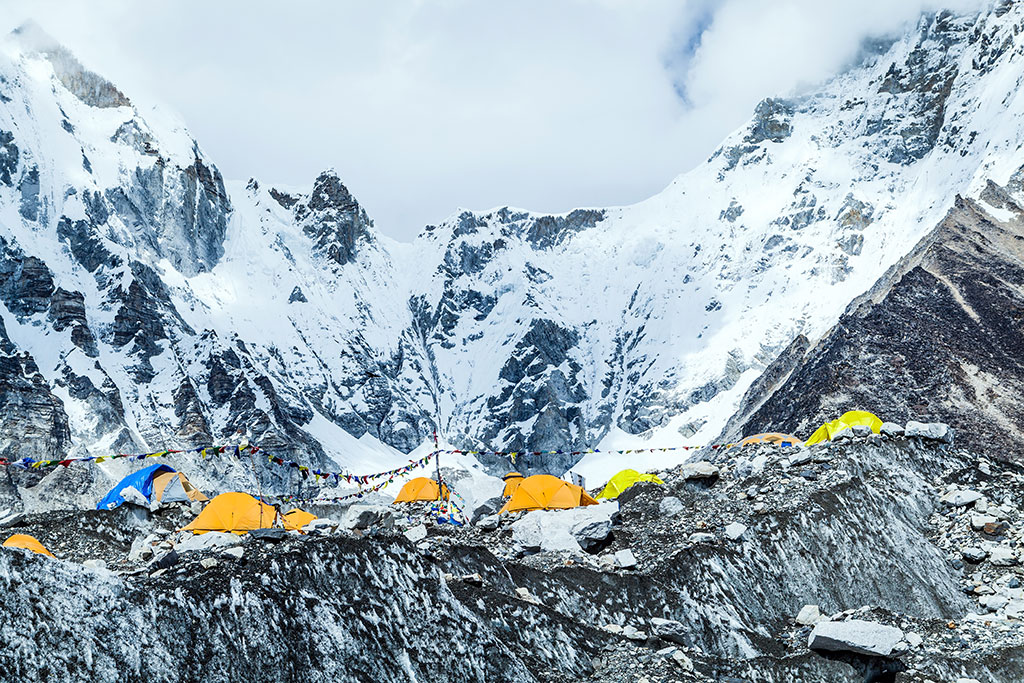5 Trekking Tips To Mount Everest You Should Keep In Mind

Mountaineering is one of the most challenging physical sports that you can challenge yourself to. Not only it requires complete control over your body but also requires a lot of technical skill. For quite some time, there has been an increased interest in mountaineering, and there are many avenues to check out for the same.
The most popular destination for enthusiasts is, of course, Mount Everest. I do not have to elaborate why it is so, but imagine being on the top of the highest peak in the world, and you would know where I am getting at. But there are a few things that would do you good to keep in mind before you begin.
In this article, I will tell you about five such factors that can make a lot of difference to your climb.
- Physical Training
The trail to the top of Mount Everest is not a technical one if you attempt it from the Nepal side of it. It is an uphill climb and as long as you keep putting one foot in front of the other, you can manage to reach the top.
But in spite of being a relatively easy climb, it does require excellent physical conditioning and proper strength training. Before you commence the climb, eight to ten months of endurance training is necessary for you to build enough stamina.
Start by climbing a long flight of stairs regularly. By the end of a month, take your training outdoors to inclined areas and couple it with at least ten kilos of load on your back. This should be enough to get you in range. - Mental Training
If you are a person who has lived indoors for the most part of his/her life, Mt. Everest is going to be a tough call. From sleeping in a tent to going in the open, it is a lot of outdoors.
The trail to the top of Everest is not a well equipped one. In the lower ranges, you will find shops run by Sherpa people. But the facilities there are not built to accommodate the Western style luxuries. You will have to make do with a hole in the ground for your toilet and might also have to make do with no showers.
These are conditions that require time to adapt. So it would be better if you get some experience beforehand. - Slow And Steady Wins The Race
Remember, it is not a race; it is a marathon. Do not try to rush through the trail. Maintain a pace at which you can both walk easily and have a chat with the group of people who are walking along with you.
It should be comfortable enough so as not to tire you. Remember, there will be places where even maintaining this walking pace will be difficult to keep up with. Conserve your stamina to use it at places that actually require it.
At the height of eleven thousand feet and above, the body needs time to acclimatize itself with a low level of oxygen. Try to spend a few days there to get used to it. - Protect Yourself From The Sun
The higher up you go, the lesser will be the protection from the UV rays of the sun. Under such circumstances, it is best to make sure that you take plenty of protection from the sun rays. It is going to be difficult during the day time as the trail will mostly be devoid of any shade.
Use SPF 50 sunblock to shield your skin. If you have to stop to rest, make sure that you do so in a covered area. Exposure to too much UV rays can lead to skin cancer and other serious ailments.
Carry a sun hat with you; although big and funny, it will save you from getting headaches and sunburn. - Don’t Forget To Eat And Drink
Climbing a high altitude, you will be burning off a lot of calories. Each step will require a mountain of effort. And the thought of food under such duress might not be the most welcome one but make sure that you keep yourself hydrated and well fed.
There is more dehydration on higher altitudes than it is at the surface. In order to get through the climb, make sure that you are drinking at least five liters of water per day and eating enough food to fill up the calorific deficit being created.
A full belly will also keep you warm throughout the day.
Have you read?
Why Compliance Is Now a Personal Issue for CEOs by David Wagner.
DOL Overtime Changes Formulate Management Strategies for Executives by Elliot Dinkin.
Why Personal Core Values are Vital to the Success of Your Journey and Business by Rob Lynch.
Where Poland’s Richest Live: The Top 10 Wealthiest Cities?
Europe’s 15 Highest Paid Travel And Hospitality CEOs.
Bring the best of the CEOWORLD magazine's global journalism to audiences in the United States and around the world. - Add CEOWORLD magazine to your Google News feed.
Follow CEOWORLD magazine headlines on: Google News, LinkedIn, Twitter, and Facebook.
Copyright 2025 The CEOWORLD magazine. All rights reserved. This material (and any extract from it) must not be copied, redistributed or placed on any website, without CEOWORLD magazine' prior written consent. For media queries, please contact: info@ceoworld.biz








